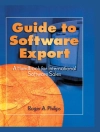This book provides a comprehensive overview of methods to build comparable corpora and of their applications, including machine translation, cross-lingual transfer, and various kinds of multilingual natural language processing. The authors begin with a brief history on the topic followed by a comparison to parallel resources and an explanation of why comparable corpora have become more widely used. In particular, they provide the basis for the multilingual capabilities of pre-trained models, such as BERT or GPT. The book then focuses on building comparable corpora, aligning their sentences to create a database of suitable translations, and using these sentence translations to produce dictionaries and term banks. Then, it is explained how comparable corpora can be used to build machine translation engines and to develop a wide variety of multilingual applications.
Содержание
Chapter 1 Introduction.- Chapter 2 Basic principles of cross-lingual models.- Chapter 3 Building comparable corpora.- Chapter 4 Extraction of parallel sentences.- Chapter 5 Induction of bilingual Dictionaries.- Chapter 6 Comparable and Parallel Corpora for Machine Translation.- Chapter 7 Other applications of comparable corpora.- Chapter 8 Conclusions and future research.- Index.
Об авторе
Serge Sharoff, Ph.D., is Professor of Language Technology and Digital Humanities at the Centre for Translation Studies, University of Leeds. His research focuses on Natural Language Processing, including automated methods for collecting very large corpora from the Web, their analysis in terms of domains, genres or text quality, as well as extraction of lexicons and terminology from corpora. The application domains for this kind of research in the Digital Humanities include text annotation, information retrieval, machine translation and computer-assisted language learning. His research stresses the inherent multilingualism of NLP, which implies that tools and resources can be ported across languages by paying attention to the respective linguistic properties.
Pierre Zweigenbaum, Ph.D., FACMI, FIAHSI, is a Senior Researcher at the Interdisciplinary Laboratory for Digital Sciences (LISN, Orsay, France), a laboratory of the French National Center for Scientific Research (CNRS) and Université Paris-Saclay, where he has led the ILES Natural Language Processing group. Before CNRS he was a researcher at Paris Public Hospitals in an Inserm team. He also was a part-time professor at the National Institute for Oriental Languages and Civilizations. His research focus is Natural Language Processing, with medicine as a main application domain. He has also designed methods to acquire linguistic knowledge automatically from corpora and thesauri, to help extend monolingual and bilingual lexicons and terminologies, using parallel and comparable corpora.
Reinhard Rapp, Ph.D., is Professor of Applied Translation Studies at Magdeburg-Stendal University of Applied Sciences and is also affiliated with the University of Mainz. He has conducted EU-funded research projects at the University of Geneva, the University of Tarragona, the University of Leeds, at Aix-Marseille University, at the University of Mainz and at the Athena Research Center in Athens. His main research interests are in computational linguistics, translation studies and cognitive science. His publications have dealt with unsupervised language learning from text corpora, word sense disambiguation, text mining, thesaurus construction, bilingual dictionary induction from parallel and comparable corpora, and with statistical and neural machine translation.












